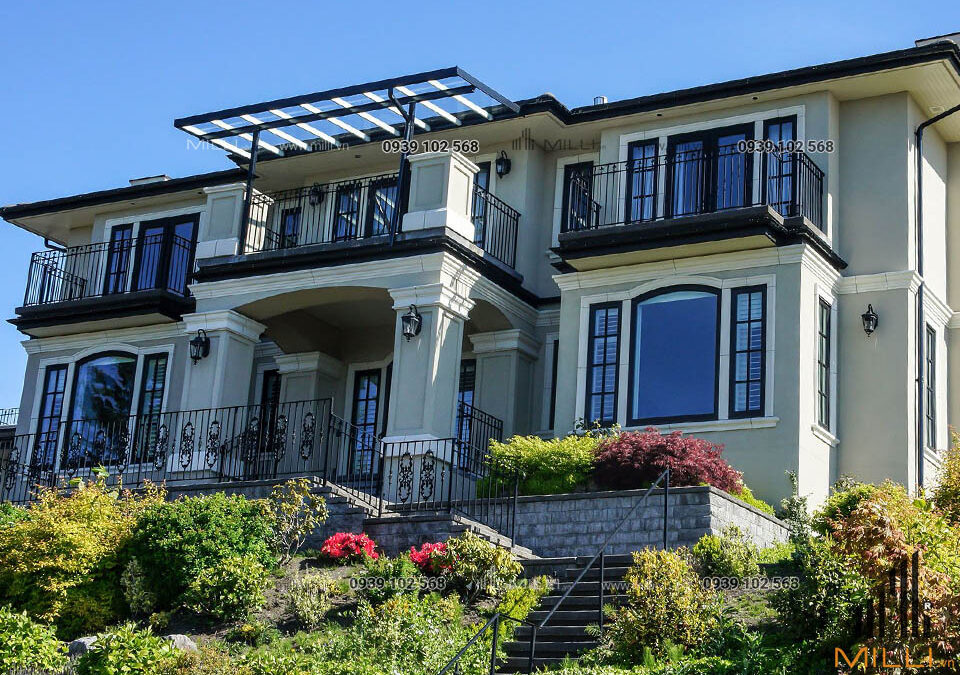
GFRC manufacturers – Impressive new building materials
As society becomes more and more modern, the living space of each person is more and more appreciated. Many home owners want to turn their living space into a work of art with many different decorative images. Therefore, the GFRC manufacturers is the most necessary and urgent need today. In order to meet the demand for new materials for the construction industry, more and more GFRC manufacturers were born. So what is GFRC material? Why should GFRC materials be used in interior and exterior architecture?
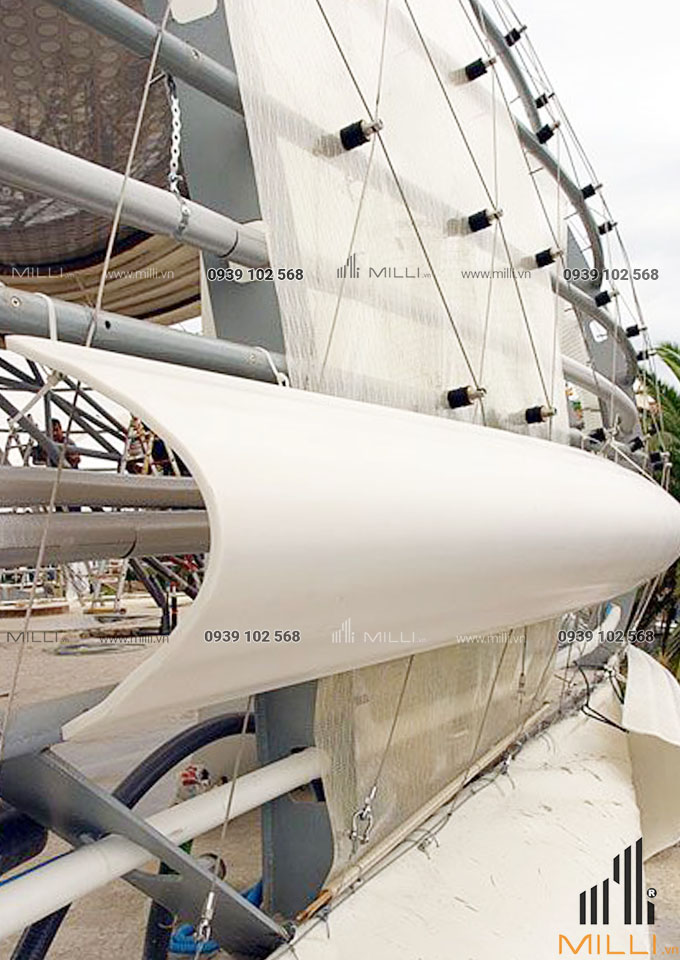
General introduction about GFRC manufacturers are providing
What is GFRC material?
GFRC is the name of the line of fiberglass reinforced concrete materials. GFRC materials are use to make interior and exterior architectural decorative products such as wall panels, door frames and arches, pillar panels, balcony panels, roof moldings, sonnets, corners. walls, railings, handrails, roof walls, domes, flower pots, monuments and decorative art relief panels, …
Glass fiber reinforced concrete (GFRC) is a composite material, the base is portland cement and mineral additives & polymer additives reinforced by alkali resistant glass fibers randomly distributed in the material mass. GFRC is a special type of concrete that uses fiberglass for reinforcement instead of steel. Thanks to superior properties compared to conventional concrete such as high mechanical strength and glass fibers that do not rust like steel, GFRC products are usually thin hollow castings, with thicknesses from 12mm to 20mm.
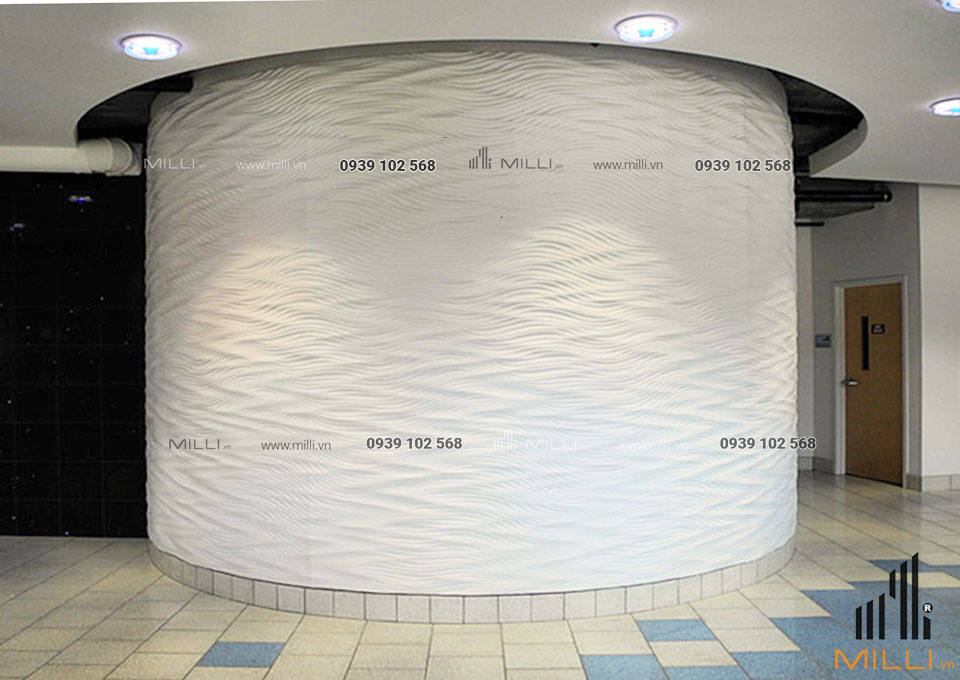
History of GFRC manufacturers
GFRC fiber reinforced concrete was development in Russia from the 1940s and until the 1970s was widely used all over the world. Today, with the growing technology of materials and additives, GFRC manufacturers have launched beautiful, durable GFRC concrete. These products show more and more advantages in modern architectural works.
For precast concrete products, GFRC concrete accounts for a large proportion and has many advantages. Products manufactured by fiber concrete technology have fast production time. To obtain a concrete product with the same strength and physical and mechanical properties, fiber reinforced concrete can reduce up to 75% in weight compared to conventional concrete. In addition, fiber reinforced concrete can also reduce the thickness of 1/2 of the traditional concrete block to achieve the same strength. The lighter weight of fiber-reinforced concrete results in significantly reduced transportation and installation costs.
In addition, GFRC concrete is also resistant to corrosion (because no reinforcement is uses) and has a longer service life. We can fabricate GFRC concrete products with flexural strengths up to 4000 psi. Fiber-reinforced concrete is easy to fabricate products with complex shapes without affecting the structure and surface finish.
In Vietnam, with the orientation of converting construction materials towards environmentally friendly, GFRC concrete has a lot of potential for application and development. With many outstanding advantages, MILLI decorative concrete panel is gradually asserting its position in the market. As an expert in the field of materials technology, MILLI products are of high quality. We have the ability to customize materials to meet customer needs very quickly. An experienced design team is ready to adapt your ideas and accompany your projects. Please contact us to answer any questions about GFRC Glass Fiber Reinforced Concrete.
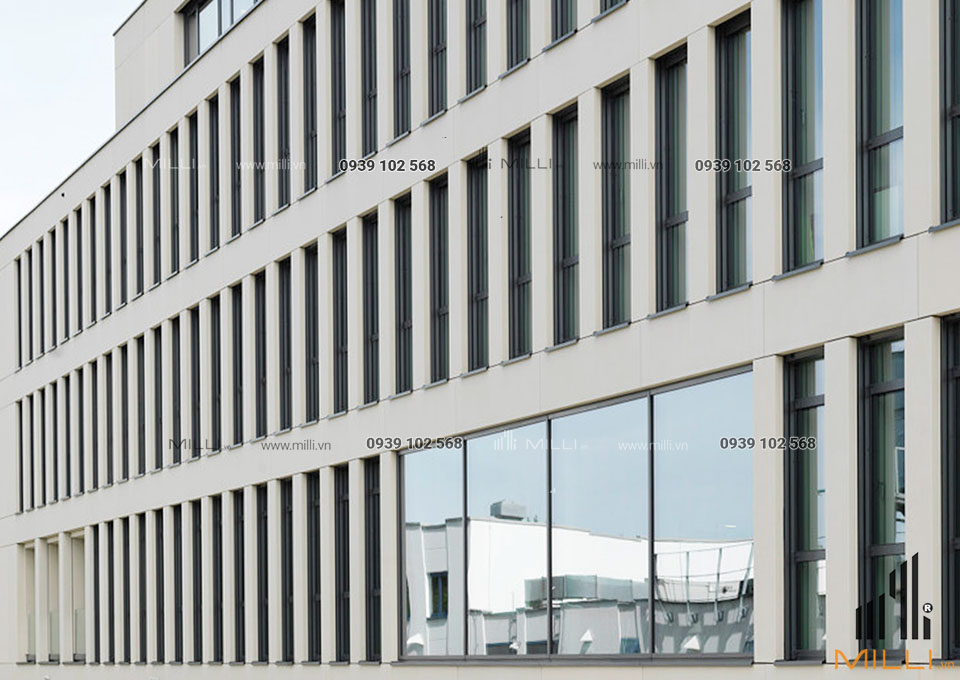
The physical properties of the product are concluded by the GFRC manufacturers
Glass fiber reinforced concrete (GFRC) is well known for its high compressive strength-to-weight ratio. This benefit results from the high cement mixture and low water content.
Other benefits are its high flexural strength (bending strength) and high tensile strength.
GFRC manufacturers have released products GFRC has appreciable load-bearing qualities. The direction resistance to load bearing is highly versatile, depending on the orientation of the glass fibers. Additionally, to bring out the high tensile strength of GFRC, it is vital to ensure that the fibers are stiff.
The primary purpose of the fibers is to provide tensile strength in lightweight panels. The addition of acrylic polymer enhances the flexural strength of the GFRC.

Benefits of products created by GFRC manufacturers
GFRC manufacturers bring to the construction industry products made from GFRC with the following qualities:
Light weight
Compared with conventional concrete products because in the structure of GFRC does not include iron, steel, only includes clean sand, glass fiber, cement, on the other hand, due to its high mechanical strength, products made of GFRC are often uses. The hollow casting is thin and divided into many modules, so construction work becomes easier with each module mounted by brackets and screws. Compared with other traditional materials for interior and exterior decoration products (concrete, ceramics, etc.), the use of GFRC products is not a burden on the building, reducing the frame structure and reinforcement. Foundation. The shortened construction period helps to reduce costs, save manpower, and quickly finish construction and put into operation.
Nice and new model
With the molding method of injection or injection molding, it is easy to create products made of GFRC materials with beautiful patterns, large sizes, complex shapes, and rich colors at will.

Durable
GFRC has high mechanical strength, Mark = 400 – 800 and especially flexural and tensile strength is higher than conventional concrete. GFRC is not prone to fracture (plasticity) in changing weather conditions, easily overcomes earthquakes, wind storms, as well as fire and water resistance. For projects near the sea such as resort, GFRC hotel is the ideal choice. GFRC has outstanding sound insulation, UV resistance, fire resistance, moisture resistance and acid resistance. Durable GFRC should reduce maintenance, repair and reinforcement costs for investors. GFRC and reinforced concrete have been tested by accelerated aging tests in the laboratory and installed under real-life conditions. The service life of GFRC is on par with precast concrete. In many environments, such as when exposed to spray salts or high humidity, GFRC have a longer life, because the fiberglass reinforcement does not corrode.
GFRC manufacturers produce environmentally friendly products
GFRC products are sunburnt products, harmless to the environment, can be reused. Currently, it is a product to replace traditional baked products that cause the greenhouse effect. GFRC is one of a number of versatile, high-performance building materials based on portland cement reinforced with a special alkali resistant glass fiber. GFRC materials can meet all requirements and conditions. The birth and development of GFRC materials has made positive and important contributions to the economy. With these properties, they are consider as a solution to the questions posed for the environment and especially for a sustainable building.

GFRC manufacturers make products without defects
Spraying is a critical part of GFRC manufacturing. Due to the spraying action, defects such as voids or cracks do not appear on the concrete surface, unlike normal concrete. Spraying also enhances the finish of the final concrete countertops or panels.
Fire Resistant
The GFRC components used to construct lightweight panels are non-flammable minerals. In addition, the face coat of concrete protects against fire and acts as a temperature regulator.
Does Glass Fiber Reinforced Concrete Have Any Disadvantages?
The mechanical properties of GFRC make it ideal for various requirements. However, one potential disadvantage for some users is the cost of GFRC. GFRC can be expensive to use when compared to ordinary concrete. Of course, the added cost comes with additional strength and several other benefits, already mentioned in previous sections.
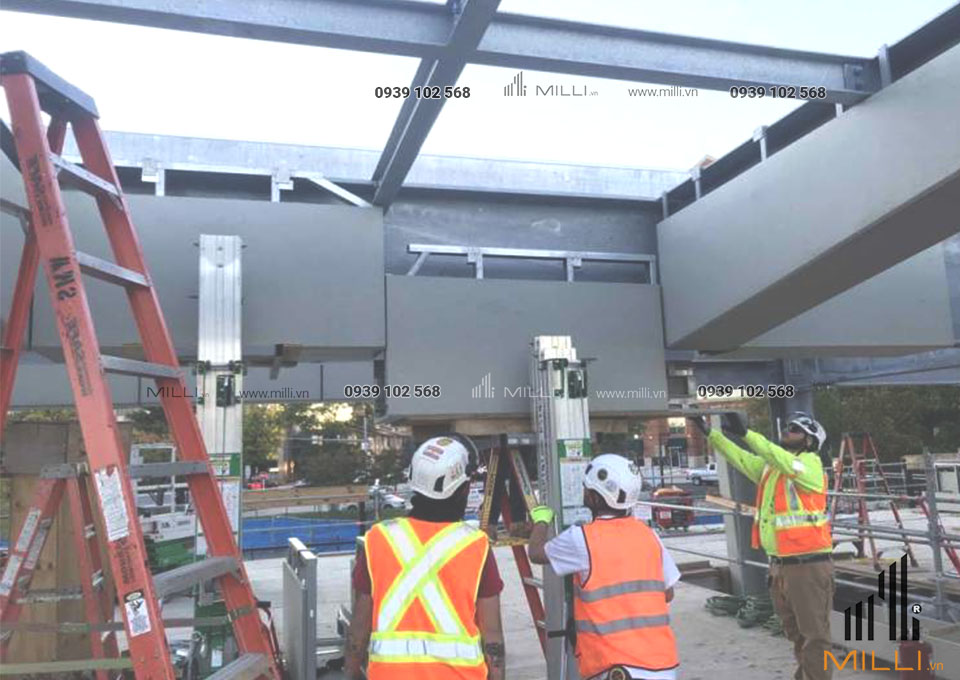
How do GFRC manufacturers make GFRC materials?
Glass Fiber Reinforced Concrete (GFRC) is made by using the following materials:
Fine Sand: The fine sand should be 0.4 mm to 0.5 mm, and the accepted range is 0.3 mm to 0.6 mm. Finer particles decrease the flowability of concrete, and coarser particles can be deflecting after striking the surface during spraying.
Cement: Ordinary Portland cement is acceptable for making glass fiber-reinforced concrete. The weight of cement is usually equal to the weight of the sand used.
Polymer: There are many types of polymer and concrete matrix mixtures, such as Ethylene Vinyl Acetate (EVA), Styrene Butadiene Rubber (SBR), and Acrylic polymer. Acrylic polymer is the preferred choice for glass fiber-reinforced concrete. The weight ratio of polymer to concrete is usually 6 grams of solid polymer per 100 grams of the cementitious mixture.
Water: The water content in the concrete mix is critical, as too much water can ruin the mixture. It is essential to consider the water content of the polymer mixture to determine the overall water content. The ratio of total water to concrete should fall between 0.30 to 0.35.
Admixtures: Manufacturers produce various admixtures to use in GFRC. Common admixtures are silica fumes and superplasticizer.
Glass Fibers: The addition of chopped-up alkali-resistant (AR) glass fibers is the defining factor of glass fiber-reinforced concrete. The amount of glass fiber will vary based on the type of manufacturing method used, as discussed below.
Sand, cement, polymers, water, and admixtures are also common in other types of reinforced concrete. GFRC is unique in terms of materials because of the addition of glass fibers.
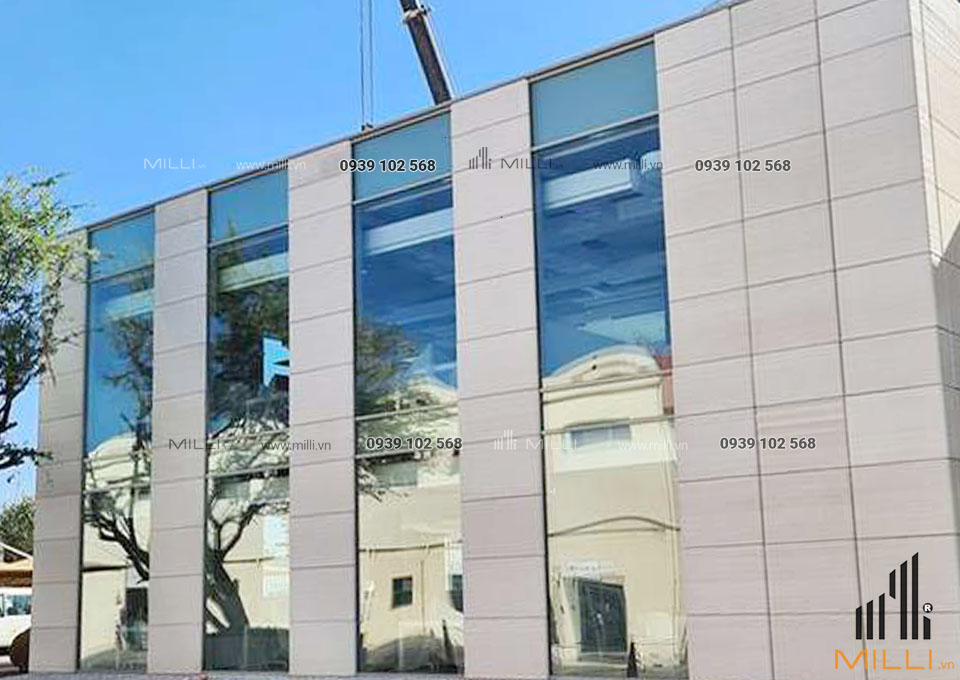
There are three manufacturing methods for Glass Fiber Reinforced Concrete:
Spray-up GFRC
- Spray-up GFRC is the conventional way to create precast concrete panels. In this method, the Glass Fiber Reinforced Concrete is sprayed into a mold by hand.
- A concentric chopper spray gun is used to spray long glass fibers into the concrete mix. The mixing occurs in the gun’s nozzle.
- On average, this method contains a glass fiber content of about 5%, a higher fiber content than the usual concrete premix. This method requires skilled labor to be successful, and good quality equipment and quality checks of the work in progress.
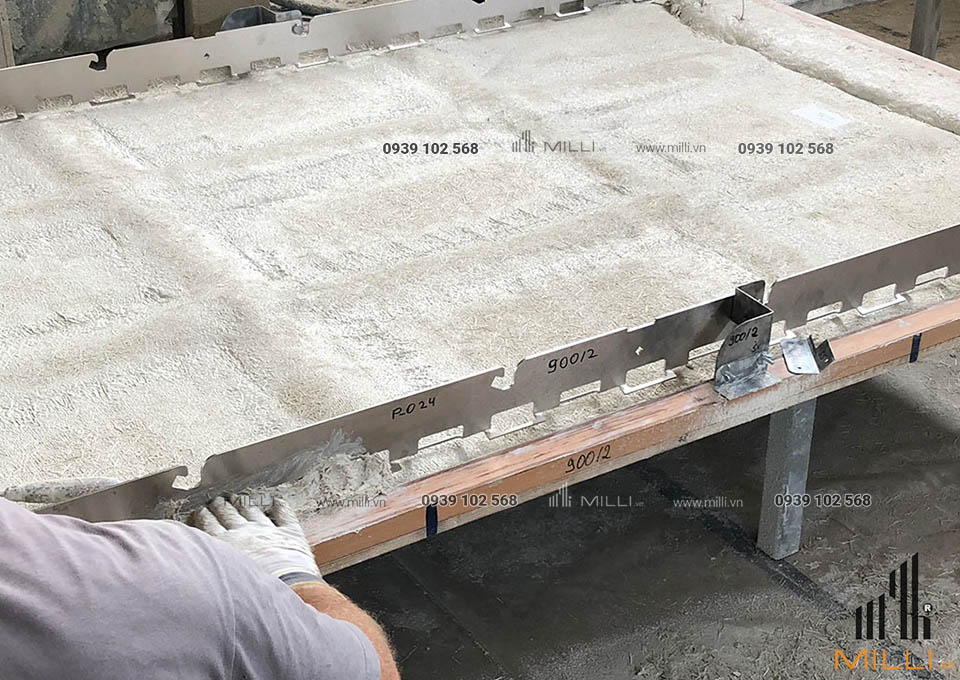
Vibration Casting
- The defining factor of vibration casting is the use of premix concrete. The premix concrete mixture is poured into a mold. Then the mold is vibrated so that the concrete achieves consolidation.
- This method is simpler and cheaper than sprayed GFRC. However, the molds in this method should be watertight. Vibration casting should not be used with rock molds.
Hybrid Casting
- Hybrid casting is the combination of spray-up and the use of a premix. A specialized spray head using a peristaltic pump is use to spray the concrete.
- Hybrid casting introduces the benefits of spray-up GFRC and vibration casting. While sprayed GFRC requires highly skilled labor, hybrid casting is possible with moderate skill.
- Due to using a spray instead of vibrations for the premix, the strength of the resultant concrete panel is higher than the vibration casting methods.
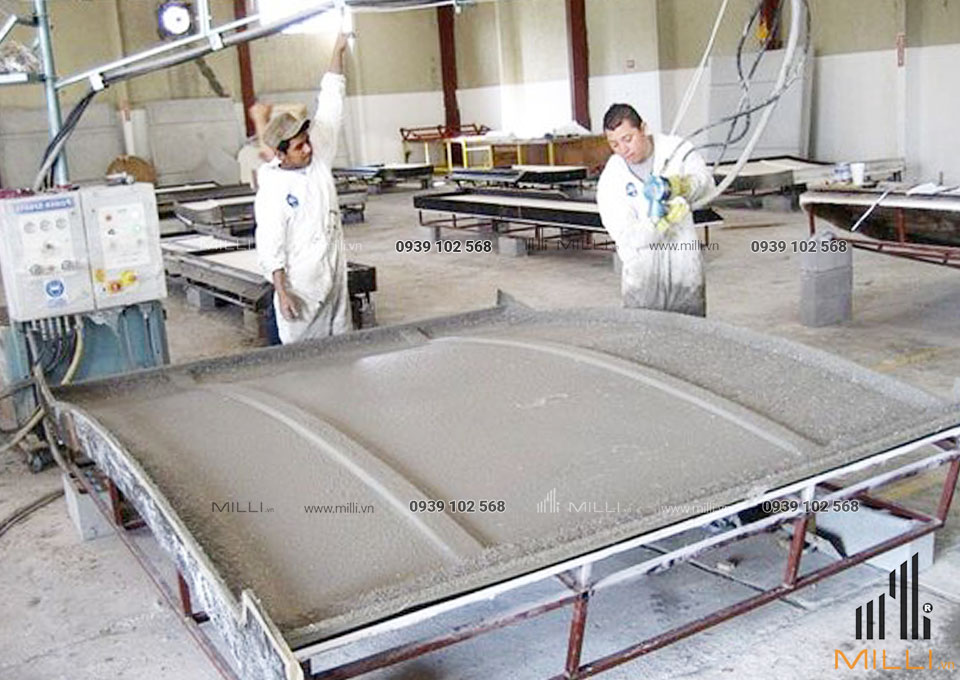
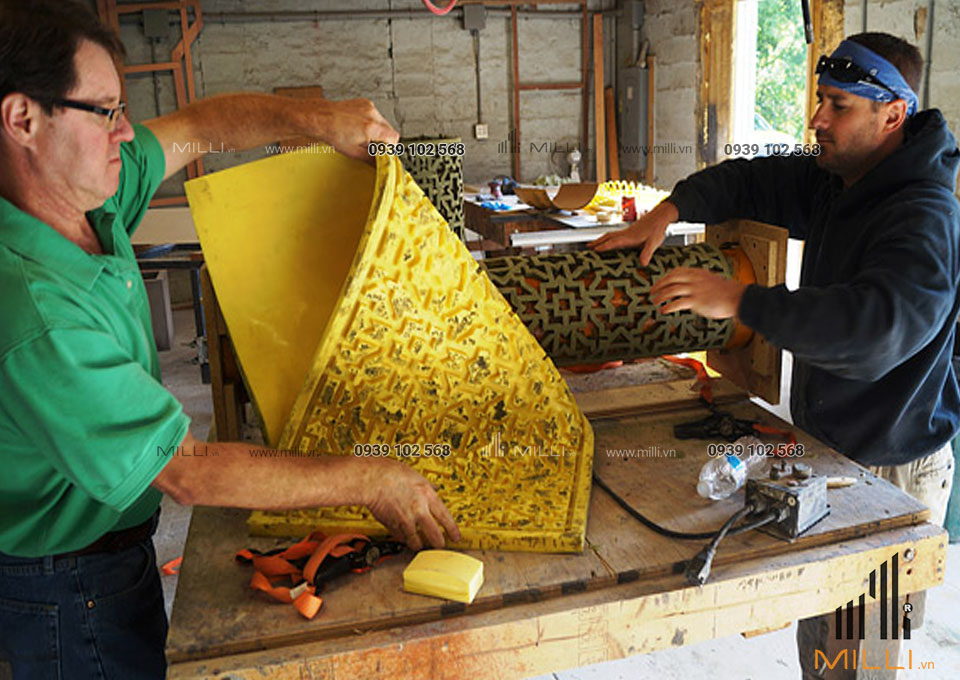
What are the Basic Uses of GFRC?
There are many applications and projects where glass fiber-reinforced concrete is the ideal choice. Some of these applications are:
Concrete Countertops
GFRC countertops are becoming more and more common today due to their high aesthetic appeal and crack resistance. Color pigments can make countertops match the required color.
GFRC Wall Panels
GFRC wall panels provide a beautiful look while reducing the overall weight. These panels are long-lasting as well as decorative for home and office interiors.
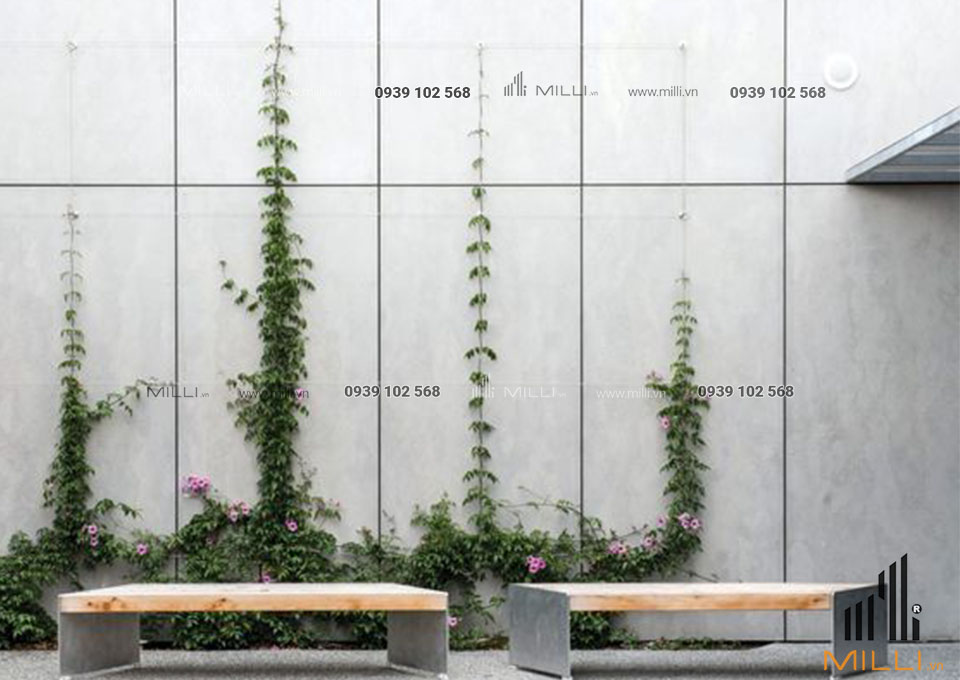
Concrete Dining Tables
Nowadays, it is common to see concrete dining tables in restaurants and houses. The concrete for these dining tables is GFRC due to its lightweight nature and high sheen. In many cases, integrated countertops and dining tables create a beautiful kitchen island design.
Fireplace Surrounds
Due to the flame-resistant nature of GFRC, these panels are ideal for fireplace surrounds to create an attractive interior design. GFRC components are also well-suited for creating fireplace hearths and mantles.
Outdoor Furniture
GFRC is resistant to adverse environmental conditions. Therefore, GFRC furniture, such as tables, benches, and chairs, is an excellent choice for outdoor places like parks.
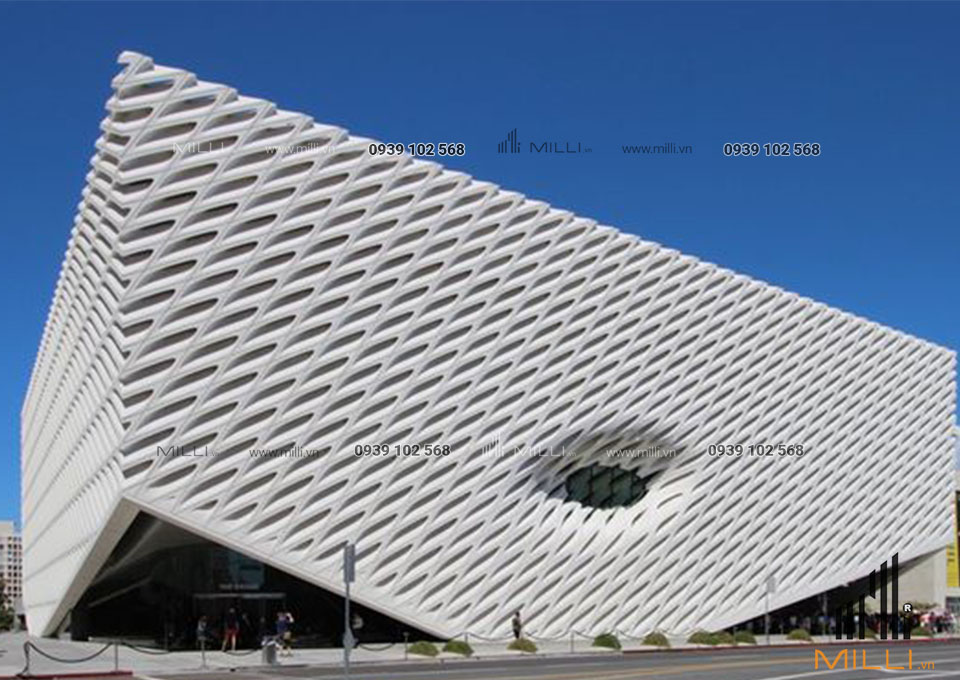
MILLI TILES – Prestigious, top quality GFRC supplier and construction unit
The addition of fiberglass to conventional Portland cement is an innovation that takes time and research to get right, but the time is worth it. Fiberglass enhances the properties of Portland cement more than anything else, making the concrete lighter than before.
The birth of GFRC manufacturers is extremely reasonable. There are now many builders and architects who are aware of the properties of GFRC and use this concrete mix in their structures. If you need strong and lightweight concrete, precast GFRC could be the ideal material for your project. You can contact MILLI TILES to learn about different GFRC products and at the same time we also accept GFRC construction for projects. Please contact us today for advice on GFRC products!
MILLI CONSTRUCTION MATERIAL COMPANY LIMITED
📱 Hotline: 0939 102 568 📞
We will quote a specific % discount for you depending on the quantity or total value of the order
Contact us to order today, to get the best price support.
Instructions for construction of wind cement bricks, you can read and download below:
Contact: Zalo: 0939 102 568
Fanpage: https://www.facebook.com/gachbonggio.hcm/
Youtube: https://www.youtube.com/channel/UC-ePtN2lIBwSp13ADgW7LSA
